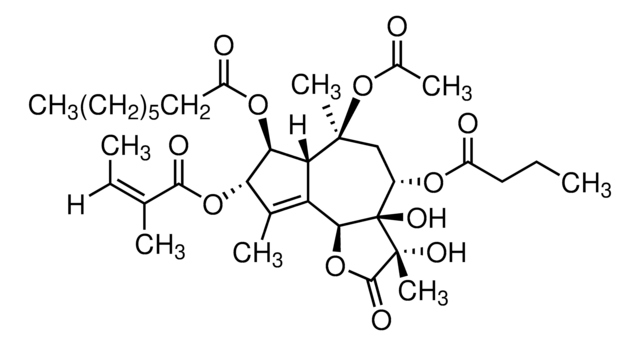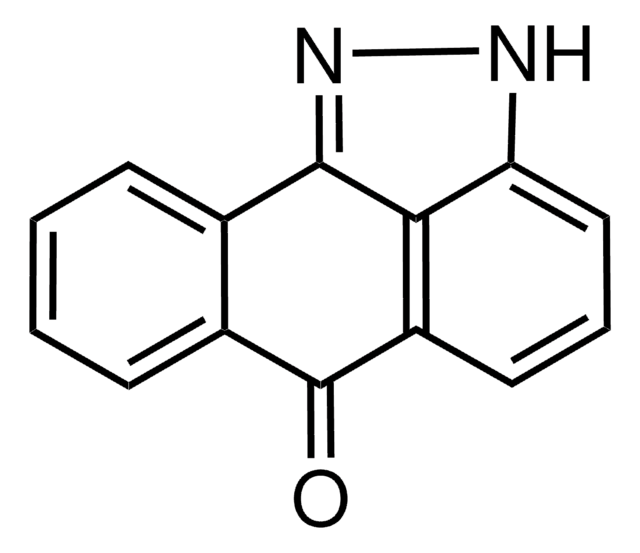S5696
SKI II
≥98% (HPLC), solid
Sinônimo(s):
4-[[4-(4-Chlorophenyl)-2-thiazolyl]amino]phenol
About This Item
Produtos recomendados
Ensaio
≥98% (HPLC)
Formulário
solid
condição de armazenamento
protect from light
cor
off-white
solubilidade
DMSO: ≥20 mg/mL
temperatura de armazenamento
2-8°C
cadeia de caracteres SMILES
Oc1ccc(Nc2nc(cs2)-c3ccc(Cl)cc3)cc1
InChI
1S/C15H11ClN2OS/c16-11-3-1-10(2-4-11)14-9-20-15(18-14)17-12-5-7-13(19)8-6-12/h1-9,19H,(H,17,18)
chave InChI
ZFGXZJKLOFCECI-UHFFFAOYSA-N
Categorias relacionadas
Aplicação
Ações bioquímicas/fisiológicas
Características e benefícios
Outras notas
Código de classe de armazenamento
11 - Combustible Solids
Classe de risco de água (WGK)
WGK 3
Ponto de fulgor (°F)
Not applicable
Ponto de fulgor (°C)
Not applicable
Equipamento de proteção individual
Eyeshields, Gloves, type N95 (US)
Escolha uma das versões mais recentes:
Já possui este produto?
Encontre a documentação dos produtos que você adquiriu recentemente na biblioteca de documentos.
Conteúdo relacionado
Discover Bioactive Small Molecules for Kinase Phosphatase Biology
Nossa equipe de cientistas tem experiência em todas as áreas de pesquisa, incluindo Life Sciences, ciência de materiais, síntese química, cromatografia, química analítica e muitas outras.
Entre em contato com a assistência técnica




